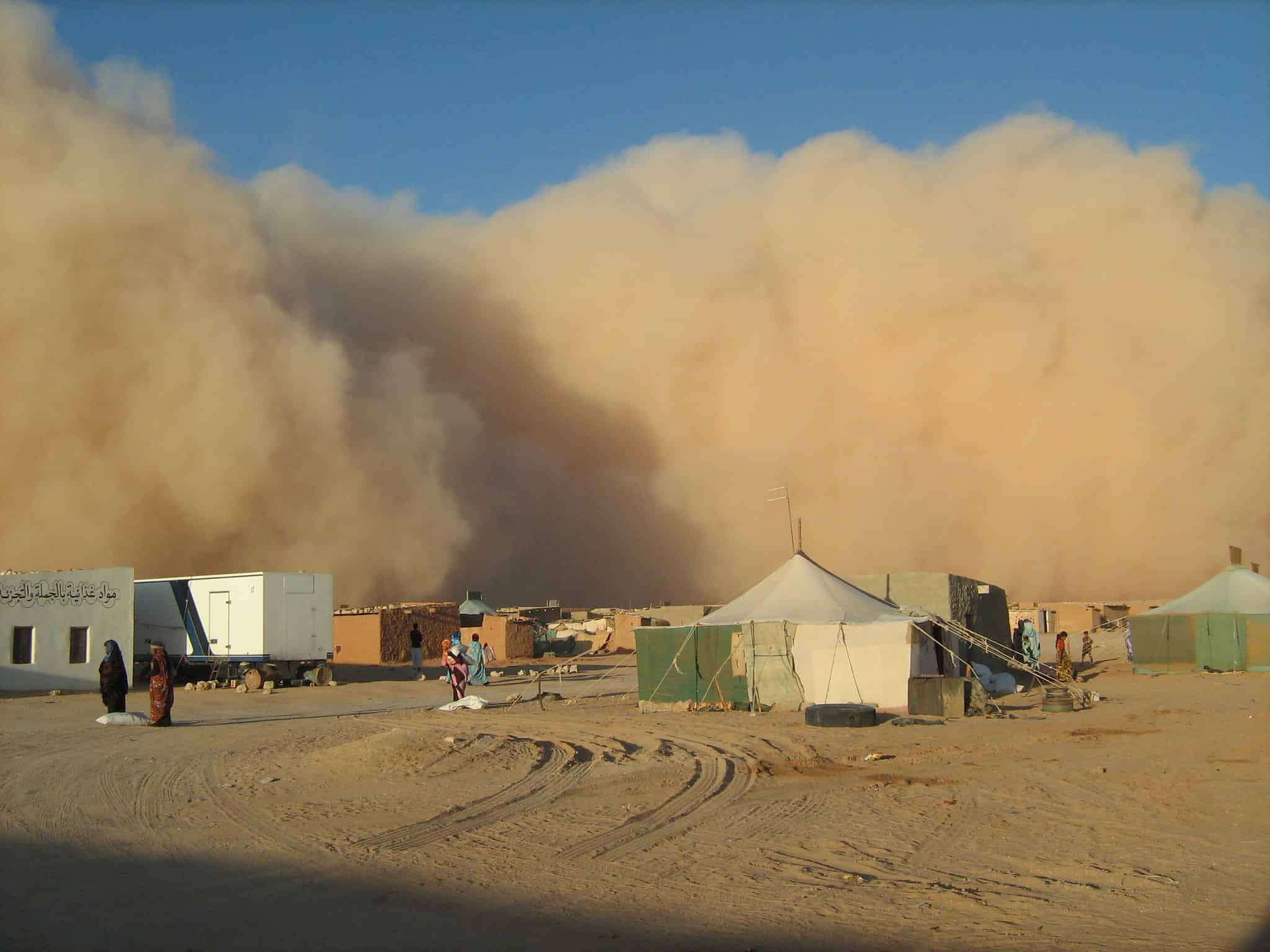Failing to bring down greenhouse gas emissions would lead to an increase in air pollution from natural sources, according to a new study. Researchers from the University of California Riverside found air pollution from plant emissions and dust would increase by as much as 14% if global temperatures rise by four degrees Celsius.

Pollution enters the atmosphere in many different ways. Most is created by people, taking the form of emissions from factories or vehicles. These man-made sources of pollution are called anthropogenic sources. But some types of air pollution, such as dust, plant emissions and ash, happen naturally. These are called natural sources.
The simultaneous increase of human-made sources of air pollution and greenhouse gas emissions has already been predicted by previous studies. However, natural sources remain understudied. James Gomez, a doctoral student at the University of California Riverside, decided to explore this further alongside a team of researchers.
“We are not looking at human emissions of air pollution, because we can change what we emit,” Gomez, the lead author of the new study, said in a statement. “We can switch to electric cars. But that may not change air pollution from plants or dust.”
The risks of air pollution
About two-thirds of future pollution is predicted to come from plants, the researchers found. All plants produce a set of chemicals known as biogenic volatile organic compounds (BVOCs), involved in plant growth, development, reproduction and defence. The sweetness of a ripe strawberry, for example, comes from a BVOC, Gomez explained.
On their own, BVOCs don’t cause any harm. However, once they react with oxygen, they produce organic aerosols, which can cause health problems if they are inhaled – including asthma, heart disease and lung cancer. Plants produce more BVOCs when temperature or CO2 increases, both of which are projected to increase in the future.
“It’s the large-scale increase in carbon dioxide that contributes to the biosphere increasing BVOCs, and then organic aerosols,” Gomez said in a statement. “Your lawn, for example, won’t produce enough BVOCs to make you sick.”
The other contributor to future air pollution is likely going to be dust from the Saharan desert, the researchers said. More dust is likely going to be blown around the world as the climate warms, with higher dust levels expected in Africa, the eastern US and the Caribbean. Dust over northern Africa will also increase due to more intense monsoons.
Both the BVOCs from plants and the dust, as well as sea salt, black carbon and other substances, fall into the category of airborne pollutants known as PM2.5 – with a diameter of 2.5 micrometers or less. The higher levels of PM2.5 pollution from natural sources are directly linked to the higher levels of CO2, as seen in the study’s findings.
The more CO2 is released, the more PM2.5 from natural sources is generated, Gomez said. And the inverse is also true, the more we reduce emissions, the better air quality we get. For example, if the temperature rises 2 degrees Celsius, PM2.5 from dust and BVOC only increases 7%, instead of the 14% projected with an increase of 4 degrees Celsius.
The researchers hope governments and companies can take fast and decisive action to reduce greenhouse emissions and consequently improve overall air quality. The results of the study may actually be a bit conservative, Gomez said, as the researchers didn’t include climate-dependent changes in wildfire emissions as a factor in their study.
The study was published in the journal Communications Earth & Environment.









